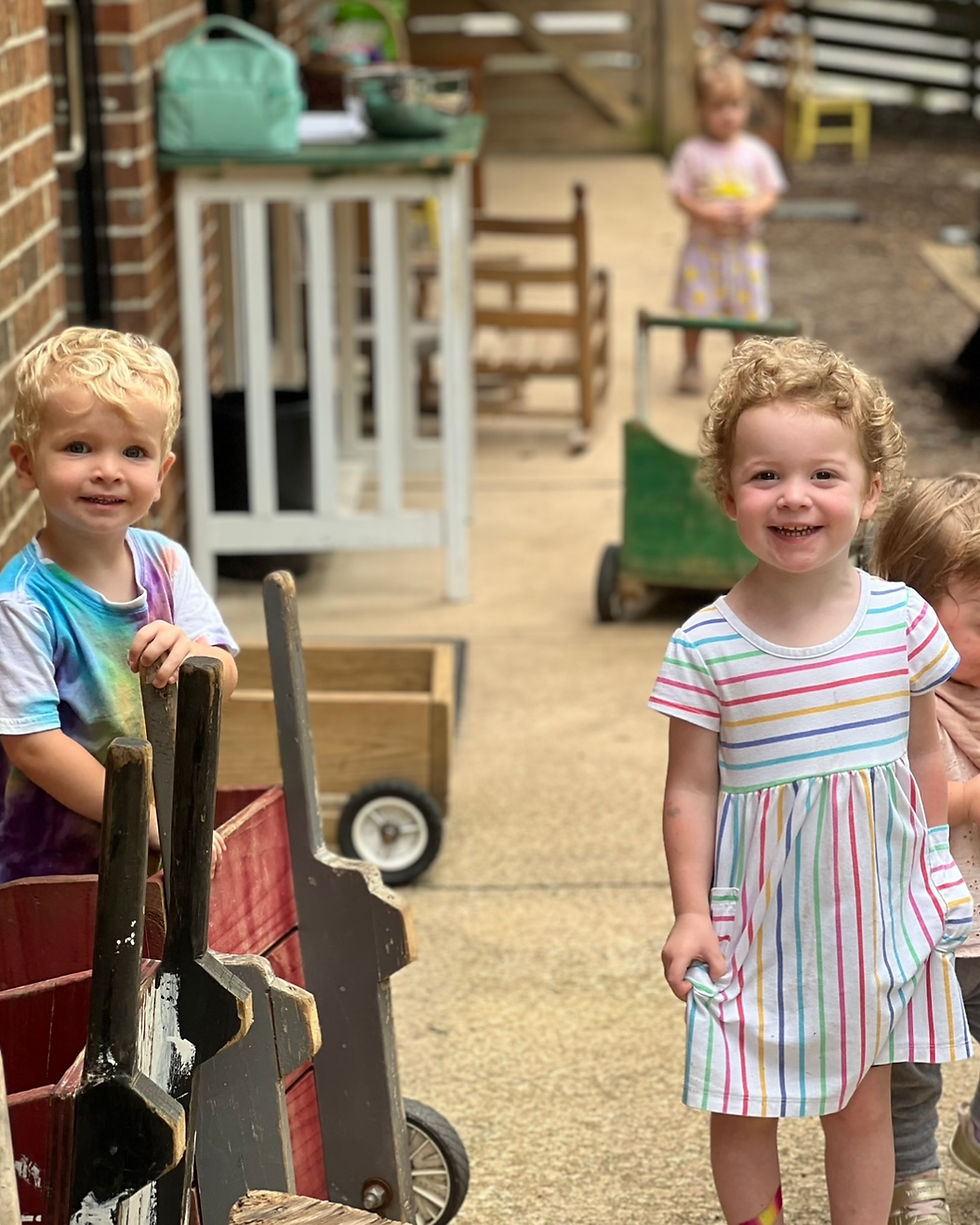The Role of Daily Rhythm in Early Childhood
- Marketing Director
- Aug 12
- 3 min read
Updated: Aug 20
How daily patterns support a child’s sense of security, growth, and joy
In Waldorf Education, rhythm is often referred to as the “breath” of the day. It’s the gentle in-and-out movement between activity and rest, indoor and outdoor time, self-led play, and teacher-led experiences. But daily rhythm is more than just structure. It is a form of nourishment for the developing child.
What is Rhythm?
When we speak of rhythm in early childhood, we’re not referring to a rigid schedule dictated by the clock. Rather, daily rhythm is the natural flow of the day, a sequence of events that unfolds in a predictable, comforting way. It's not about what happens when, it's about what happens next.

For example, a child may not know that snack time is at 9:30 AM, but they know it comes after outdoor play. They may not track time by the hour, but they sense what comes next by the rhythm of the day.
Rhythm vs. Schedule
This distinction matters. A schedule is externally imposed by calendars, bells, or alarms. A daily rhythm is internally lived. It’s the song of the day, shaped by repetition and connection rather than clock time. While both rhythm and schedule provide order, rhythm is more flexible and responsive to the child’s inner life and developmental needs.
Why Repetition Matters for Young Children
Children thrive on repetition because it builds a sense of security and trust. When daily life feels familiar, young children can relax into it. They are freed from the stress of unpredictability and can focus instead on exploring, imagining, and growing.
Repetition also builds competence. A child who sets out placemats each day for snack time or folds a blanket every afternoon after nap learns through doing, each time deepening their mastery. In this way, repetition is not monotonous; it is empowering.
The Benefits of a Predictable Daily Rhythm
Emotional Security: Predictable sequences help children feel safe and grounded.
Lower Anxiety: Knowing what comes next reduces the need for constant transitions and explanations.
Better Transitions: Children resist change less when the rhythm is familiar and expected.
Meaningful Moments: Simple, repeated rituals such as lighting a candle, singing a verse, or folding laundry become touchstones of connection.
Freedom Within Structure: Rhythm offers children dependable anchors throughout the day, allowing them freedom to play and imagine between those anchors.
Establishing Rhythm at Home
Building rhythm doesn’t require overhauling your entire day. In fact, Waldorf philosophy encourages a slow and steady approach. Begin with one meaningful moment, repeated daily. Once that becomes second nature, gently layer in another.
Begin with:
Mealtimes: Bless the meal, set the table together, or light a candle.
Sleep rituals: A song, a story, or brushing hair can all serve as peaceful transitions.
Connection rituals: Tea after school, a walk before dinner, or tidying up with a song.
The most sustainable rhythms are the ones that feel alive and personal to your family, not copied from a chart or checklist. Your rhythm should reflect your values and flow naturally with your home life.
Rhythm Supports the Whole Family
While rhythm nurtures the child, it also brings ease to parents and caregivers. A well-held rhythm means fewer power struggles, smoother mornings, easier drop-off, and more spacious evenings. In a world full of stimulation and urgency, rhythm allows families to exhale...and simply be.






Comments